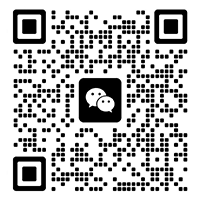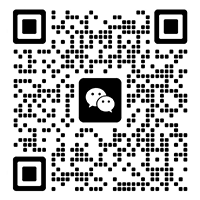A Complete Analysis of the PCB Cloning Process: Core Steps and Technical Difficulties
"Cloning" (PCB Cloning), formally known as "circuit board reverse engineering," refers to the process of reverse-engineering the design data (such as schematics, PCB files, and BOM lists) from an existing physical circuit board through a series of technical means. This process has important applications in fields such as repair, learning, archaeology, secondary development, and legal backups. This article will explain the detailed steps of PCB cloning in an easy-to-understand manner, with a focus on analyzing its difficulties and challenges.
Detailed Steps of PCB Cloning:
Step 1: Preparation and Visual Inspection
1.Obtain the sample board: Acquire an intact sample board (motherboard) to be cloned.
2.Documentation:
Take clear, high-resolution photos of the top and bottom sides for future reference.
Record the board's dimensions, number of layers, special interfaces/components, etc.
3.Cleaning and treatment: Clean the board surface with anhydrous alcohol. If there is a solder mask (green oil), a mild paint remover might be needed to remove it, clearly exposing the traces and pads. (Note: This operation may damage the board and must be done carefully).
Step 2: Component Removal and Recording
1.Extract the BOM list: Record the model, parameters, and designator (e.g., R1, C2, U3) of all components. For chips, accurately record the model number and orientation.
2.Remove components: Use tools like a hot air gun and soldering iron to remove all components from the board in order, and store them properly classified. All components must be removed before proceeding to the next scanning step.
Step 3: Circuit Board Scanning and Image Processing
1.High-definition scanning: Use a high-precision scanner (at least 600 DPI or higher) to scan the top and bottom layers of the circuit board separately. For multi-layer boards, each layer needs to be scanned individually (see challenge analysis).
2.Image processing: Use software like Photoshop to process the scanned images:
Correct the angle and contrast.
Convert the image to a black and white bitmap (BMP format), ensuring traces and pads are black, the background is white, and the image is clear without impurities.
Step 4: Drawing Export and Layer Processing (Core)
1.Import into software: Import the processed BMP images into professional cloning software (e.g., OpenProject, QuickPcb2005, etc.).
2.Trace layers: The software will automatically use the image as a background. The operator needs to manually trace the pads (PAD), vias (VIA), and tracks (TRACK) over the background to generate the actual PCB file. This step is the most labor-intensive and requires the most patience.
3.Layer alignment: For double-sided boards, the top and bottom layer drawings must be precisely aligned according to the via positions.
Step 5: Schematic Generation and Verification
1.Netlist-derived schematic: In the PCB software, reverse-engineer the schematic based on the drawn routing network. This is a process combining automatic and manual adjustments.
2.Manual verification: The generated schematic may contain errors. An engineer needs to carefully verify and optimize it based on circuit knowledge and component functionality to ensure its logical correctness.
Step 6: Design Verification and Output
1.Run DRC: Perform a Design Rule Check (DRC) on the generated PCB file to ensure there are no errors such as short circuits or broken traces.
2.Output production files: Finally, output Gerber files, drill files, BOM list, coordinate files, etc. These files can be sent directly to PCB manufacturers and assembly houses for production.
Main Difficulties and Challenges in the Cloning Process:
Cloning is not simply "copy and paste." Its difficulty and challenges are mainly reflected in the following aspects:
1.Processing Multi-layer Boards (The Biggest Challenge)
Problem: Ordinary double-sided boards only require scanning the top and bottom sides. However, for multi-layer boards like 4-layer, 6-layer, or more, the inner layer circuits cannot be scanned directly.
Solution: Typically, a layer-by-layer sanding method is used, grinding off one layer with sandpaper or a grinder, scanning and recording it, then grinding the next layer. This process is extremely demanding on skill and patience; a slight mistake can grind away traces, rendering the sample board useless and causing loss of information. Professional companies use expensive tomography scanners (e.g., X-ray) to non-destructively obtain inner layer information.
2.High-Density Components and Miniaturized Designs
Problem: Modern PCBs extensively use BGA (Ball Grid Array packages), QFN, 0402/0201, or even smaller SMD components. The small size and dense pins of these components not only make removal and soldering difficult but also easily cause unclear images due to reflection and shadows during scanning, affecting tracing accuracy.
3.Accuracy and Errors in Software and Manual Operations
Problem: Scanned images may have distortions, and manual tracing inevitably introduces errors. These minor errors can be fatal in high-speed digital circuits or high-frequency analog circuits, leading to signal integrity issues and rendering the cloned board non-functional.
Solution: Experienced engineers are required for the operation, followed by strict Electrical Rule Checking (ERC) and Design Rule Checking (DRC).
4.Destroyed or Sanded Chip Models
Problem: Original board manufacturers sometimes sand off the model markings on chips (Remark) for encryption or intellectual property protection. Without identifying the core chips, cloning becomes meaningless.
Solution: Engineers need to infer the chip model based on the circuit structure, pin arrangement, surrounding circuitry, and board function. This requires profound circuit knowledge and accumulated experience.
5. Software and Firmware Extraction
Problem: Even if the hardware is 100% copied, the cloned board remains a pile of "scrap metal" if the program (firmware) inside chips like MCUs (Microcontroller Units), CPLDs/FPGAs cannot be read.
Solution: Reading firmware usually requires cracking the chip's encryption mechanism, which has a very high technical threshold and may involve legal risks.
In summary, PCB cloning is a technology-intensive task. The "ease" of cloning lies in its procedural operations; for simple, low-layer boards, even amateurs can complete it. The "difficulty," however, is manifested in handling high multilayer boards, high-density components, encrypted chips, and firmware, which requires professional equipment, extensive experience, and deep technical expertise. Simultaneously, it must be noted that cloning activities must strictly comply with relevant intellectual property laws and regulations and be used for legal purposes only.



